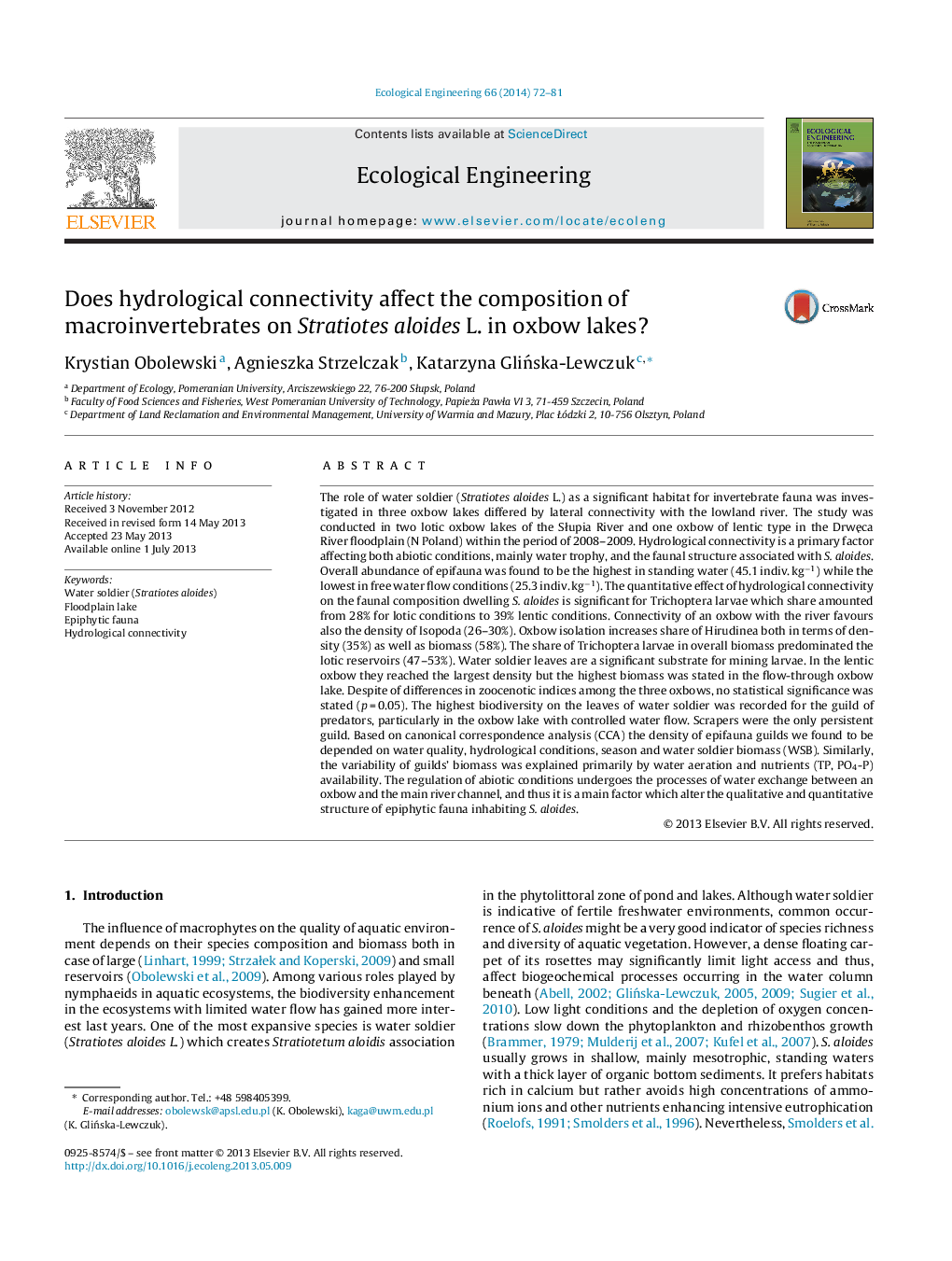| کد مقاله | کد نشریه | سال انتشار | مقاله انگلیسی | نسخه تمام متن |
|---|---|---|---|---|
| 4389540 | 1618033 | 2014 | 10 صفحه PDF | دانلود رایگان |

The role of water soldier (Stratiotes aloides L.) as a significant habitat for invertebrate fauna was investigated in three oxbow lakes differed by lateral connectivity with the lowland river. The study was conducted in two lotic oxbow lakes of the Słupia River and one oxbow of lentic type in the Drwęca River floodplain (N Poland) within the period of 2008–2009. Hydrological connectivity is a primary factor affecting both abiotic conditions, mainly water trophy, and the faunal structure associated with S. aloides. Overall abundance of epifauna was found to be the highest in standing water (45.1 indiv. kg−1) while the lowest in free water flow conditions (25.3 indiv. kg−1). The quantitative effect of hydrological connectivity on the faunal composition dwelling S. aloides is significant for Trichoptera larvae which share amounted from 28% for lotic conditions to 39% lentic conditions. Connectivity of an oxbow with the river favours also the density of Isopoda (26–30%). Oxbow isolation increases share of Hirudinea both in terms of density (35%) as well as biomass (58%). The share of Trichoptera larvae in overall biomass predominated the lotic reservoirs (47–53%). Water soldier leaves are a significant substrate for mining larvae. In the lentic oxbow they reached the largest density but the highest biomass was stated in the flow-through oxbow lake. Despite of differences in zoocenotic indices among the three oxbows, no statistical significance was stated (p = 0.05). The highest biodiversity on the leaves of water soldier was recorded for the guild of predators, particularly in the oxbow lake with controlled water flow. Scrapers were the only persistent guild. Based on canonical correspondence analysis (CCA) the density of epifauna guilds we found to be depended on water quality, hydrological conditions, season and water soldier biomass (WSB). Similarly, the variability of guilds’ biomass was explained primarily by water aeration and nutrients (TP, PO4-P) availability. The regulation of abiotic conditions undergoes the processes of water exchange between an oxbow and the main river channel, and thus it is a main factor which alter the qualitative and quantitative structure of epiphytic fauna inhabiting S. aloides.
Journal: Ecological Engineering - Volume 66, May 2014, Pages 72–81